Gun Tests Magazine
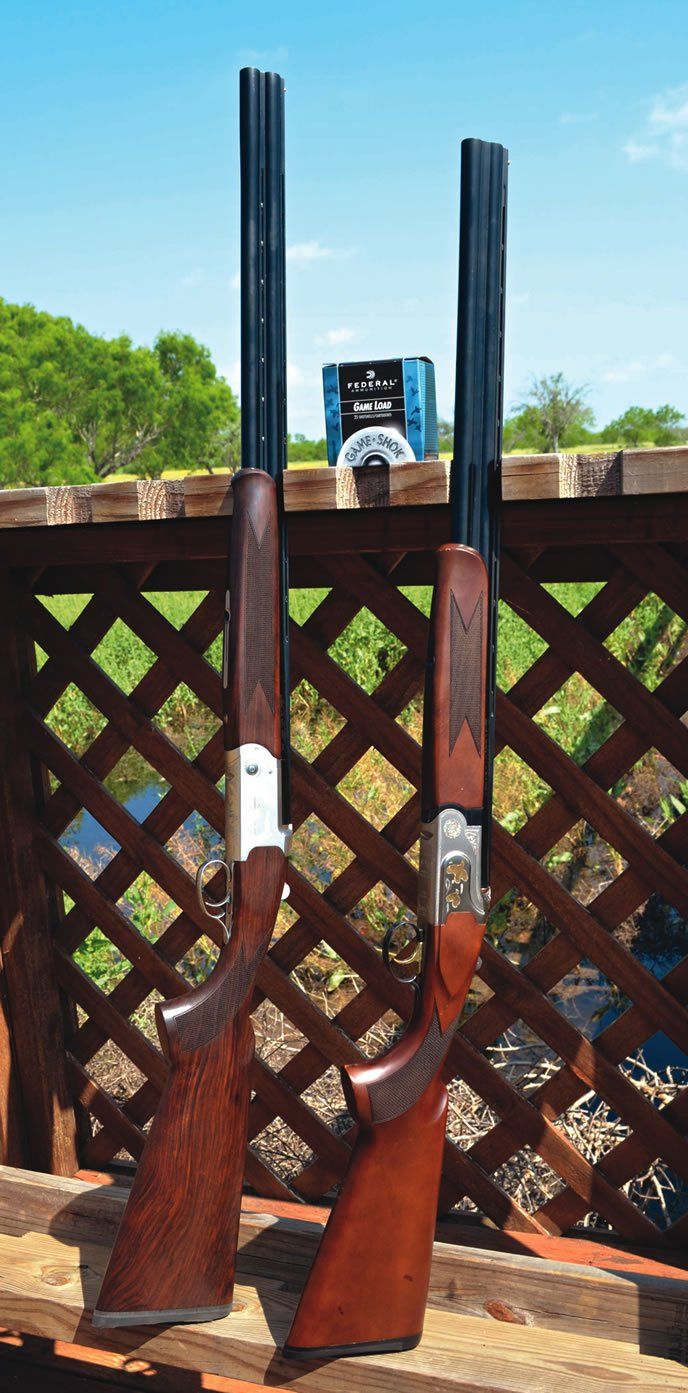
Many beginning or very budget-minded shooters in today’s market seem to be weighing the option of selecting a low-end over-and-under shotgun for clays or birds. Basing a purchase on “the cheaper the better” may not be the best or wisest decision. We have been asked by several of our readers to look into the performance and reliability of bargain-basement over/under shotguns that are found in the field and on clay target courses across the country. The question is, are these good bargain firearms that offer two different chokes for shooting situations and are normally easier to use than a similarly priced pump-action or semiautomatic?
A typical scenario in which these guns might be considered would be where a parent is trying to find out whether a youngster wants to become a shotgun enthusiast. The parent does not want to invest a major chunk of cash into a fine fowling piece if the youngster ends up touching off a couple of shots and then decides to go back to playing video games. So the market for low-end shotguns is alluring, particularly for over/unders that offer two different chokes for shooting situations and are typically easier to use and handle than pump actions or semiautomatics.
What the low-end buyer gives up are higher-quality parts and metal, heightened quality control, better and more attractive wood, and the hands-on touch of fine engraved checkering of the wood and metal. The tempering or hardening of metal parts used in a firearm is an expensive process and is one of the reasons many shooting tools carry a hefty price tag. However, these hardened parts do tend to hold up better and last longer than the soft metal parts of budget firearms.
Gun Tests Magazine
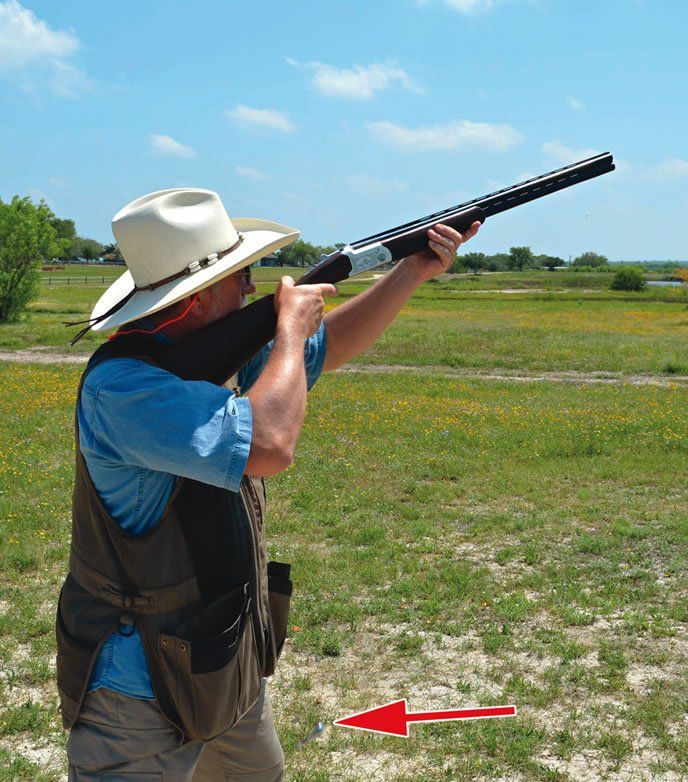
Budget-minded shooters may be working under the assumption that a $500 to $700 shotgun can be just as effective in fulfilling the shooting needs of a beginner as the offerings of major firearm manufacturers that start at about $1,800 and climb up rather quickly.
One of the budget brands frequently mentioned is Yildiz, Turkish-made shotguns which are available through Academy Sports outlets. So for this adventure into low-end shotguns, we selected a Yildiz SPZ ME 20 gauge and put it up against a substantially more expensive Mossberg International Silver Reserve Bantam, $760.
For our shooting evaluations on both the clay-target range and at the patterning board, our test ammunition was Federal Game 2.75-inch, 2.5 dram equivalent loads packing 7⁄8 ounce of No. 71⁄2 shot with an average muzzle velocity of 1210 fps. We should note here that we had several misfires with the Yildiz, while the Mossberg touched off all of its shots without a hiccup. On the down side, recoil was noticeably higher when using the Mossberg both on the range and at the patterning board, although we would not consider the 20-gauge kick unacceptably excessive. Here are more of our findings:
Yildiz SPZ ME No. U38361 20 Gauge, $430
GUN TESTS GRADE: D-
Probably one of the most commonly encountered low-end shotguns on the market today, we found this shotgun had good heft and balance. Its appearance is what a shooter should expect from a budget item — stamped checkering, laser-engraved receiver, and average-looking wood. But, as with many other elements of everyday life, beauty is in the eye of the beholder. To some on our team it looked nice; others said it looked cheap.
With its 28-inch barrels and overall length of 45.25 inches, this shotgun swung smoothly, probably due to its proper weight distribution. A shotgun with too much weight in the barrels or too much heft in the stock is not balanced. With this 20 gauge, the weight distribution was nice and even.
The Yildiz stock had a drop at the comb of 1.5 inches and a drop at the heel of 2.5 inches, with a length of pull that measured 14.75 inches. These dimensions are about average for an out-of-the-box shotgun in this price range. The fit was acceptable for most of our test team.
What quickly became unacceptable was what happened after the twelfth shot on a sporting clays course – the Yildiz’s trigger guard fell off. A gunsmith who happened to be among our shooting group determined that the retaining pin designed to secure the front stud of the trigger guard was missing. There were holes in either side of the tang leading to the stud hole, but no hole had been drilled through the stud to allow for the insertion of a retaining pin. As the veteran gunsmith said, it was “a clear example of a lack of quality control.”
We tried to slightly bend the guard to make a tighter fit, but that failed to hold the guard in place. Ultimately, we resorted to using Super Glue to secure the guard in place to allow for the completion of our testing.
We were also uncomfortable with the feel of the shotgun’s forearm and stock. The oil finish seemed to have raised the grain of the wood, making both pieces a little rough to the touch. The wood was also rather plain looking, which would be expected of a firearm on the low end of the price scale.
Checkering on both the forearm and stock was very flat. Apparently, the stamping process did not create the crisp lines and points found with hand-engraved checkering. Once again, the buyer is getting what he pays for.
On the plus side, the trigger pull for both barrels was nice, although not as crisp as we would have liked. The bottom barrel touched off at 4.5 pounds, and the top barrel touched off at 5 pounds, both with just a little slack. The mechanical trigger stages the second shot automatically, even if there is a misfire on the first shot. We appreciated the mechanical trigger in the Yildiz when we encountered a couple of misfires.
It should be noted that while there is a selectable barrel feature, allowing a shooter to fire the bottom or top barrel as a first shot, there is no symbol on the tang to indicate where the safety should be placed for the selection process. The owner’s manual explains that placing the selector button (safety) to the right will fire the lower barrel first and placing it to the left will fire the upper barrel first. Normally an “O” and a “U” are etched into the tang to help the shooter know which barrel will fire first.
The Yildiz shotgun chokes were lousy. The patterning board performance of the Yildiz was very disappointing and may have helped explain our only moderate success on clay targets. We fired the test shells using the Improved Cylinder and Modified internal screw-in chokes at patterning paper set at a distance of 30 yards. While the Modified choke produced a 51-49 pattern (51 percent above the center and 49 percent below), about 65 percent of the pellets hit on the left side of the target. There were 268 hits (77 percent of the shot) in a 20-inch circle around the center of the target and only four 3-inch holes in that pattern. However, there were thirteen 3-inch holes in the 10-inch band between the 20-inch circle and the 30-inch circle. This means that a bird or clay could have easily flown through the right side of the pattern, even if the shot was centered on the target.
The Improved Cylinder choke results were worse. There were 111 hits (41 percent of the shot) in the 20-inch circle surrounding the target center, with 26 percent of the hits above the center and 74 percent below. Also patterning heavily to the left side of the target, there were seven 3-inch holes in the 20-inch circle and 11 holes in the ring between the 20-inch and 30-inch circles.
As noted earlier, in addition to the trigger guard falling off the firearm repeatedly until we used Super Glue to hold it in place, we experienced several misfires after the Yildiz had been fired about 400 times. The firing pins’ light hits on the shells would not touch off the primers. Several owners of other Yildiz shotguns alerted us to this problem, with it normally occurring after the shotgun has been fired several hundred times. The fix often requires the replacement of the soft-metal firing pins. Briley Manufacturing Co. provides warranty work for Yildiz shotguns, and our understanding is that the current waiting period for parts is about six months.
Our Team Said: When a part falls off a new shotgun, when it patterns off center, and when it begins to misfire to the point that warranty work will be needed, it is hard to praise the firearm. We can’t recommend that Gun Tests readers buy the Yildiz.
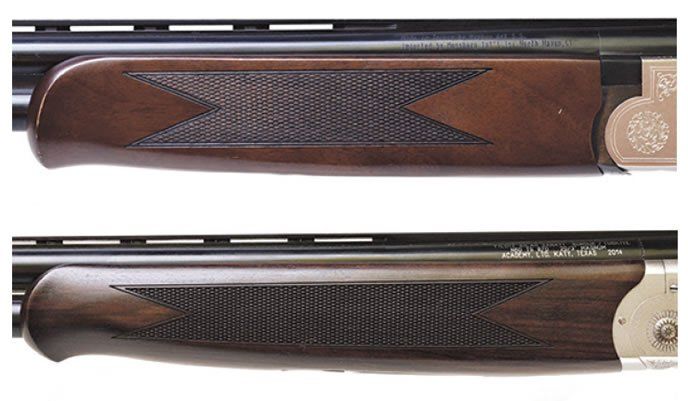
Mossberg International Silver Reserve Bantam No. 75457 20 Gauge, $759
GUN TESTS GRADE: D
Our first impression of this Mossberg was that the cosmetic attempt to make this appear to be a higher-quality firearm was a failure. In blunt terms, it looked cheap to our shooters. Slightly heavier than the Yildiz yet with shorter barrels, this shotgun did not have a proper balance for easily and effectively moving through targets.
The Mossberg tipped the scales at 5.75 pounds, with 26-inch barrels and an overall length of just 41.5 inches. Instead of feeling short and quick, it felt unwieldy, as some of the test team described it. It had a very short length of pull of 13.25 inches, which could have been a contributing factor to the poor handling experience. Drop at the comb was 1.5 inches and drop at the heel was 2.25 inches.
The forearm of the Mossberg was very thin, and though the stamped checkering in the wood was sharper than that of the Yildiz, the small grip was not conducive to proper target acquisition. We also noted a slight looseness in the wood-to-metal fit — which in our experience can lead to cracking or splitting problems.
Despite its slightly heavier weight, the Mossberg hit us with more felt recoil than the Yildiz. While a 20 gauge is normally not noted for its recoil, we found the Mossberg produced some uncomfortable shoulder shock.
Another downside was the trigger pull, which touched off at a heavy 7.5 pounds for both barrels. A clean, crisp trigger pull is not as essential with a shotgun as it is with a rifle or handgun, but a heavy, long pull impedes properly putting shot on targets.
On the patterning range, the Mossberg produced a solid 49-51 pattern with the Modified internal screw-in choke and a nearly identical 48-52 pattern with the Improved Cylinder choke. Both patterns were fairly uniform, although slightly right of center.
The Modified choke produced 182 hits in a 20-inch circle, which was an impressive 61 percent, with only three 3-inch holes. With the Improved Cylinder choke, the hits in the 20-inch circle numbered 148, which was 57 percent of the pattern, and had only two 3-inch holes. Both chokes produced nine 3-inch holes in the 20-inch to 30-inch ring.
This paper performance was better than that of the Yildiz, but our success rate on clays was much less impressive. The Mossberg seemed clunky and unbalanced, although there were no shell malfunctions like we experienced with the Yildiz.
Our Team Said: The looks of this shotgun screamed “low end,” with poor metal-to-wood fit and signs of wear appearing quickly on both the trigger and action. The triggers were stiff and what we would consider overly heavy. The Mossberg did perform better than the Yildiz on the patterning board, but it was not smooth to handle and disappointed shooters on the clay target range.
Written and photographed by Ralph Winingham, using evaluations from Gun Tests team testers.


























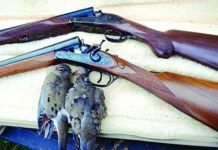
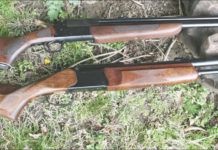

essay avec plus haut gamme dans la meme sorte ici j ai un mosseberg en calibre 20 payer 850 dollards canadien tres bon fusil chasse a plumes.
I feel like something is wrong with this article and I feel like there was bias in writing this. I’m speaking specifically of the Yildiz. I get the disappointment in getting a low quality gun; however, you should’ve judged the firearm by one that works. There is ZERO brands of firearm that doesn’t produce an occasional bad firearm. Sounds like you got one and then judged the gun based on the lemon you got. Not good practice. When researching any firearm you will hear praise and you will hear “i had to send it back for warranty work”. That is why they have a warranty department. Be fair, talk about the fact you got a lemon but also test it using a working fire arm. I got a lot of guns at my house, and one out of those zillion guns was a lemon, I sold it, said it was a piece of crap, will never buy a budget gun again, but,,i have a 200 dollar gun i’ve had for over 20yrs, never an issue. Got another gun that wasn’t super expensive (most of mine are these days because of that lousy one off), and i absolutely love it. There’s a lot of love for Yildiz. I have two for my children, and I won’t tolerate a non-shooter. There’s nothing wrong with mine. There’s nothing wrong with a lot of people’s Yildiz. You based your recommendation on a faulty gun and represent you article as if your recommendation is on the level. Readers who don’t have a lot of savvy won’t see it for what it is. Get over it, there’s no perfect companies, McDonald’s isn’t bad just because ONE person screwed up your order. My pizza hut and the one in the city cook pizza’s differently. I’ve eaten pizza hut all over the country. My pizza hut is terrible, but pizza hut itself is NOT – necessarily. Your article is one sided that’s all.
I just wanted to say one LAST thing – kids. The way you put those guns down, aw man, kids out in the field don’t feel good. You called their little guns junk. Really don’t like that. And I was purchasing my kid the expensive kind, like citori or silver pigeon. Yildiz provided what I wanted, at a better price. I brought it home, TRIED IT OUT, it was a keeper. and she,,,has to save up if she wants guns like mommy. But if you think they’re not self conscious about,,how they look, the guns they carry. they wanna look like you, and me. As adults we need to keep that in mind, and parents without a lot of money, what gun does a child need?? except one light enough for them to wield and shoots where they point it. They’ll become great shots with that gun and move up and on. 2k for a child’s gun, a teen runnin and gunnin, lol, giv’em that piece of junk ta tare up, let ’em earn that real nice one, not only that, they need to pick the gun that fits THEM and not what I think they should have. But I tell you what, unless we’re goin upland hunting, that baby isn’t touchin my Brownings, my franchi, my ethos. Happy hunting.
You had complaint about the length of pull being too short but specifically stated you were testing a “bantam” model 20 gauge???
Sounds a little like piling on and pointing out anything you could find wrong with it. I just bought a Winchester 101 ~$1800 and it wouldn’t reset or fire the upper barrel after less than a box of AA light target loads. Imagine having to ship a brand new in the box Belgium premium built O/U back 2 weeks before the dove season opens for repairs! In this case the additional $1300 over the Yildiz proce was a waste of money and I can’t recommend any Browning/Winchester since ithey are all poorly made firearms with terrible quality control… hopefully you get the sarcasm. I watched a 16 year old kid shoot a straight 200 this past week with one of those shitty $450 Yildiz while every hot shot custom Beretta and Browning couldn’t get a clean round. Just saying….
I’m not selling my Superposed or Red Label but
I bought the 20 gauge for my wife back in 2011. I didn’t want to spend a fortune on a passing fancy of her’s. She gave up shooting clays with me after 2 years. So then my late step son began shooting with me. Its had at least 1200 rounds maybe more pit thru it. No misfires at all. I keep plastic blank firing pin protectors in the chambers when stored. I dont care if the checkering wasn’t hand cut by a guy with an Italian accent and a flowing scarf. The laser etching vs hand engraved receiver ? I don’t want a museum piece.
True the chokes could be better. But Briley makes good after market chokes for other guns so I will buy a mod and IC replacement. I put the blame on user error for misses more than the chokes but it couldn’t hurt to have some other chokes. I’ve shot it a few times. Downed a dove and broke some clays on the last stand when my shoulder got a little sore from my 12 gauge. It has good balance and comes to the shoulder quickly and a great swing. I’m fairly tall so the length of pull isn’t quite right for me. After all its a youth gun or for smaller ladies.
The forearm sounds a little loose but really isn’t. It’s never came loose. I know its not Krupps steel with world class tolerances and machine work made from Chippendale’s Walnut. If it was I would keep it behind glass not behind a golf cart.
But it’s not cheap pot metal made by communist slaves from China either nor is the wood some scrap hardwood from a sawmill floor.
I’m happy with it for the purpose I bought it for.
Having Yildiz parts on our website i’m struggling to know how you ended up with such a loser. The stocks we have are very nice as well at the barrels an small parts finishes. The only problem I’ve seen is a poor connection of the forend lug on the O/U barrels. I might also point out you chose the lower priced model to go up against the Mossberg. In the spirit of fairness pick up the Yildiz HPS and have another go at it. Full disclosure, I do not yet own a Yildiz shotgun mostly due to the fact i prefer to not order mystery specimens and i like to support my local gun shops.